Pellet boiler binding: diagrams, installation and connection rules for the pellet boiler
The main task of the heating system is to maintain a comfortable temperature inside the house. Properly designed piping of the pellet boiler allows you to achieve an even distribution of heat throughout the living area, and also protects the equipment from damage and overheating.
It is advisable to entrust this work with a professional. However, having secured the support of specialists, and having studied the principles of connecting the heating unit, you can do the strapping yourself. Doubt it?
We will help you in solving this issue. The article describes different strapping schemes, outlines the pros and cons of each option, gives tips on choosing heating equipment. In addition, we have prepared detailed instructions for connecting boilers and putting them into operation.
The content of the article:
What is boiler piping?
The piping is all those elements that are located between the radiators and the boiler. Today, many home craftsmen do not pay special attention to it, organize it without adhering to any norms and recommendations of specialists.
However, a correctly implemented binding allows you to solve many problems:
- the pressure in the pipeline will never exceed the maximum allowable level;
- scale, slag, sand and similar debris that may be in the water will be removed;
- Excessive thermal expansion will be compensated;
- provides the ability to connect more than one circuit to the system;
- air dissolved in the coolant will be removed;
- allows you to automatically turn on the boiler and accumulate hot water, which will help save money.
If we talk about pellet boilers, then they are not always distinguished by high autonomy. But if you responsibly approach the laying of the pipeline, then you can achieve greater efficiency from such equipment.
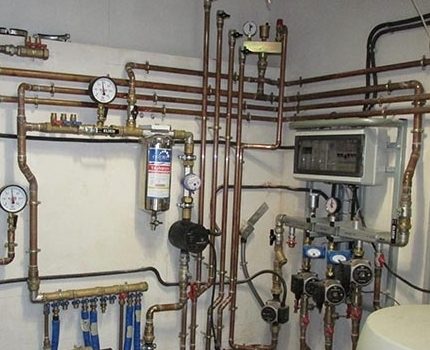
Features of the operation of pellet boilers
Heating equipment using compressed wood pellets as fuel appeared relatively recently. But from the moment of their invention, such boilers immediately won the recognition of millions of customers.
If it is not possible to install gas equipment in the house, then it is recommended to buy it pellet boiler.
The advantages of this type of heat generators include:
- Autonomy. Due to the presence of a control unit and a system for automatically switching on the burners, once loading fuel, you can forget about it for 2-4 weeks.
- Safety. Pellet boilers have multi-stage protection, which avoids the explosion of the pipeline and fire.
- Efficiency. On average, the efficiency of equipment ranges from 87 to 97%.
- Low cost of service. Pellets are inexpensive, and you need to clean the ash pan no more than once a month.
- Durability. The service life of the units is at least 25 years.
- Compactness. Most often, the models are relatively small.
If you get acquainted with the advantages of this type of heating equipment, it becomes clear why it so quickly gained popularity among residents of Europe and America.
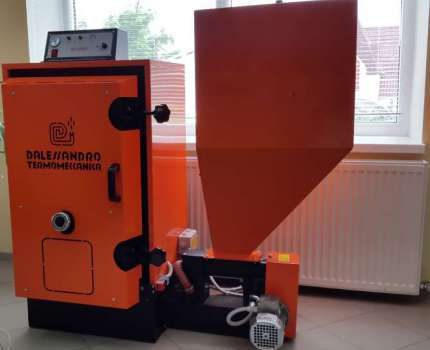
The ubiquitous distribution of pellet aggregates is hindered by a rather high cost. Not everyone who wants to can immediately lay out a tidy sum for the boiler itself, the burner and additional equipment.
Possible fluid movement options
There are many schemes. But all methods can be divided into two main groups, depending on the principle of movement of the thermal carrier through the pipes. Therefore, a specific scheme is selected depending on whether the system uses natural or forced pumping.
Features of natural circulation
The simplest and most inexpensive solution is boiler piping, where the heat carrier will move through the pipes using the laws of physics. Even a novice will be able to implement such a scheme, and it will take a minimum of time.
System feature heating with natural circulation lies in the lack of a pump. In this case, the movement of fluid in the pipeline occurs due to the ability of a colder medium to push out a hotter and less dense one.
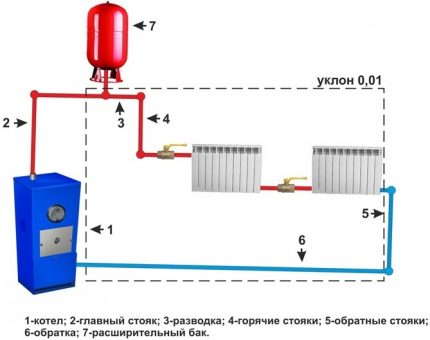
The advantages of this solution include:
- low cost of installation;
- low cost of service;
- ease of installation;
- the ability to quickly restore the system in case of failure.
But the scheme with the natural movement of the liquid has its drawbacks. First of all, it can only be used with a single-loop system. In addition, such a solution will be effective exclusively in small houses.
Forced circulation option
Heating systems in which circulation pump. And this is not at all surprising, because such a scheme is convenient, versatile and practical. You can use it in homes and buildings of absolutely any size.
But even despite the unique advantages, forced circuits coolants have some significant disadvantages:
- high cost of installation - the average cost of the pump is about 150-160 dollars;
- complexity of implementation - the scheme consists of a large number of elements, which greatly complicates its implementation;
- the need for balancing - all components of the heating system at home should be precisely aligned with each other;
- dependence on the availability of electricity - the heating pump will only work if current is supplied to it.
When organizing a heating system for a building with two or more circuits, it is recommended to use the option with forced movement of the coolant.

However, in this case, the fundamental factor of productivity is the capacity of the boiler. Note that if it is not enough, the equipment will not be able to heat a sufficient amount of coolant.
Connection of the boiler with a collector
Two of the above schemes appeared quite a long time ago. They are divided, depending on the method of assembly of the circuit, into tee, collector and mixed.
Today, the first option is gradually being superseded by the more innovative - collector. Its main advantage is high efficiency. But for the implementation will have to invest a considerable amount.
This kind of wiring involves the installation of a special water collector behind the pellet boiler - collector for heating. Each pipe, radiator or faucet connected to the heating system of the building is connected to this element.
The collector is installed in a specially equipped cabinet. It receives hot water immediately after heating by the boiler. Only after that the heat carrier is distributed through the pipeline.
The advantages of this scheme are obvious:
- the owner of the house gets the opportunity to separately control each heating circuit;
- stable water pressure is maintained at any point in the heating system;
- only one pipe leaves the collector for one radiator, respectively, they can be of smaller diameter.
It is important to understand that this level of comfort is expensive. After all, each individual node in the heating system will have to lay its own pipeline.
As a result, this will lead to the need to increase the budget, more consumption of fittings, pipes and other fittings.
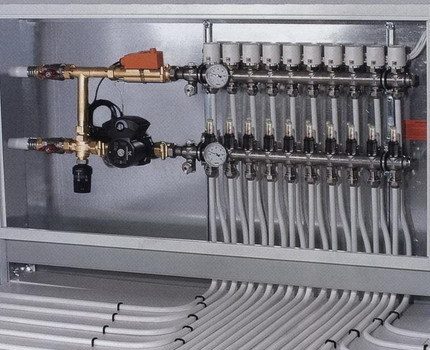
The main stages of the connection process
As mentioned above, a properly laid pipeline will significantly increase the efficiency of the heating system and make its operation as safe as possible. Therefore, before you go to the store or proceed with installation, it is recommended that you thoroughly deal with each stage of the work in all details.
Selection of equipment and necessary parts
When starting to implement a pellet boiler tying scheme, first of all, you need to correctly select the necessary parts and additional equipment. It is recommended to buy quality products from reliable manufacturers. It is not worth saving, as this will lead to frequent breakdowns and will make the operation of the heating system unsafe.
To get started, you need to buy the following items:
- Circulation pump. It is designed to ensure uninterrupted movement of the coolant through the pipes.
- Air valves. These elements remove air from the system that enters there along with cold water.
- Expansion tank. Excessive heat carrier accumulates in it, which are subsequently diverted to the sewer.
- Collector - distributes hot water along the contours.
- Sump. Its main task is to remove various debris from the system: slag, sand, scale, etc.
- Water gunIt’s a hydraulic separator. Used to connect to the circuit system, where the coolant moves with other parameters.
You will also need heating radiators. They must be metal or bimetallic. Today you can pick up models that fit perfectly into the interior. Although they are quite expensive, they will last several decades.
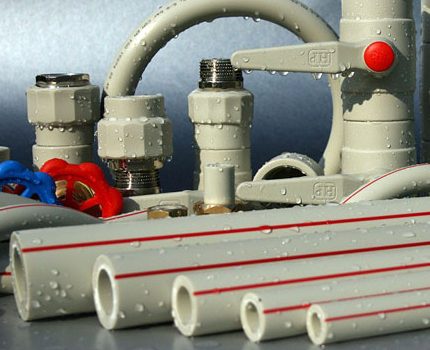
Pellet boiler piping
If there is knowledge and experience in arranging the heating circuit, then you can do the connection process yourself. It is important to strictly follow the manufacturer's recommendations given in the instructions for the specific model of the pellet boiler.
The first step is to install a pellet boiler, connecting accessories:
- Choice of premises for the location of the unit. To do this, read the instructions supplied by the manufacturer. Most often, it provides detailed recommendations for arranging a room.
- Burner connection, which will be purchased along with the boiler, choosing the right type.
- Fuel Tank Installation. This is a hopper sold with the heating unit. The size of the room depends on its size, which will be allocated for the boiler room.
- Screw connection - devices responsible for the supply of pellets.
- Connecting the remote control - it is necessary to ensure uninterrupted automatic operation.
The whole process of tying a pellet boiler is divided into several stages. So, first you need to choose the location of the collector, after which it will be attached to the radiators.
For this, plumbing fixtures with a diameter of 1 inch are used. If some openings of the distributor remain unoccupied, then they must be closed with plugs.
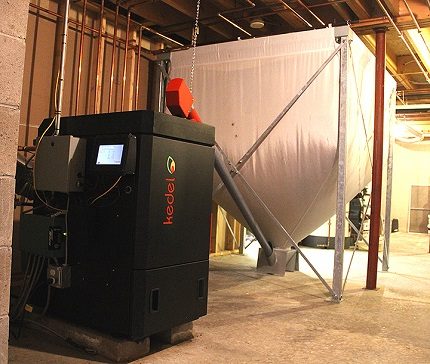
Then they perform the following actions:
- The gasket from the boiler is a pipe whose diameter is 1.25 inches.
- Installation on the inlet pipe of the distribution pipe.
- Insert in outline or circulation pump installation behind the control valve. The device must be installed in the horizontal position of the axis. It is recommended to protect it from debris and dirt that can get from the outside by putting a strainer.
The first stage is over. Further, you can install additional components such as sensors, an expansion tank and a safety valve. Also do not forget about the organization of the chimney.
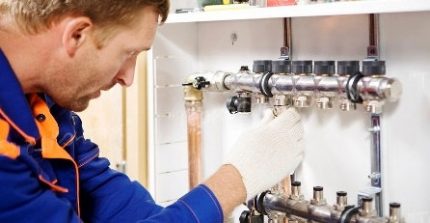
Expansion tank installation
After heating, the volume occupied by the coolant increases, so care must be taken to provide enough space for it and to avoid an explosion. That is why an expansion tank is needed - all excess hot water enters it. In addition, a similar element allows you to maintain a stable pressure in the heating system of the house.
An inexperienced buyer will undoubtedly have questions related to which expansion tank is better to choose. They differ in color and purpose. For the heating system, equipment painted in red is used.
At choosing an expansion tank special attention is paid to its size. Determining the optimal volume is not difficult.To do this, you need to calculate how much water will be used in the system and add 10-12% to the resulting number.

Safety valve: is it needed?
The main task of this element is to protect the boiler from a sharp increase in pressure, which significantly extends the service life. After it reacts, part of the heat carrier flows out of the heating system - this allows you to reduce the pressure.
It is necessary to select shutoff valves depending on the capacity of the boiler and the maximum temperature of the water pumped by it. It is better to buy models that work if the pressure is 20-30% higher than the operating parameters of the system.
It should be borne in mind that the diameter of the inlet of the safety valve must be equal to the size of the pipe or be large.
There are several types of protective fittings. The most versatile model is the overflow valve protection mechanism.
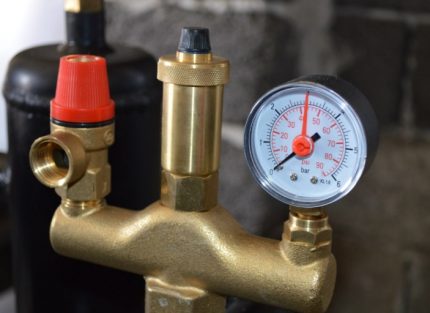
There are models of pellet boilers with integrated security group or without her. In the first case, the assembly scheme of the system will be much simpler - no need to put a manometer, safety valve and air vent for the heating line.
Features of connecting a pellet boiler
When buying this kind of heat generator, you need to understand that it does not have the function of adjusting the heat supply. Simply put, the combustion of pellet fuel cannot be stopped.
This means that in the event of a power outage, the circulation pump will stop and the coolant in the system will also move. To prevent further pressure build-up and system failure, several emergency circuits are used.
In order for the operation of a solid fuel boiler to be as safe as possible, it is necessary to ensure:
- timely supply of cold water to the equipment;
- during operation, keep doors, inspection hatches, filler pipes of the heating system closed;
- use only a specific fuel specified by the manufacturer in the instructions for your model;
- organize another additional emergency circuit.
If you take into account all the nuances when connecting pellet equipment, you can create a self-regulating and minimally dependent on the person system. But this will have to spend a little more time and money.
Chimney installation rules
The efficiency of the boiler depends largely on how good the draft is. If the chimney was designed correctly, it will provide excellent air exhaust at any temperature and wind power.
The first nuance that you should pay attention to is the diameter of the chimney, which should be identical to the size of the outlet pipe. It is also necessary to install an element that removes excess moisture.
Do not forget about the cap. If mounted correctly, it will not block the pipe or create an aerodynamic barrier.
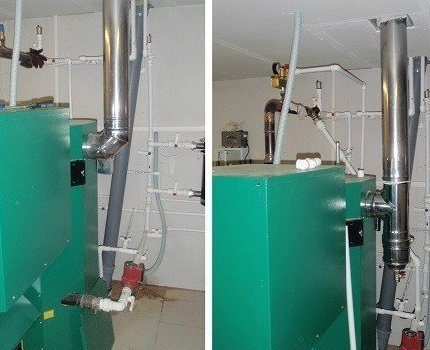
In most cases, use metal chimney pipes. Therefore, they must be properly insulated and equipped with hatches for cleaning - it is correct to equip each knee with a revision door so that it is convenient to remove soot and other combustion products.
It must be remembered that heating equipment operating on pellets does not tolerate either too little or too much traction. It is important to carefully monitor the traction during operation.
To protect the boiler room from fire when the draft is overturned, manufacturers put a plastic corrugation tube between the hopper and the boiler - if reverse draft occurs, the plastic will burn and fuel will not come.
Connect and configure equipment
After the strapping scheme has been implemented and the boiler has been installed, it is time to proceed with its configuration and connection. The equipment joins all communications: heating system and water supply.
Many modern models of pellet boilers are equipped with a burner, powered by electricity. Therefore, check if the device needs a current supply.
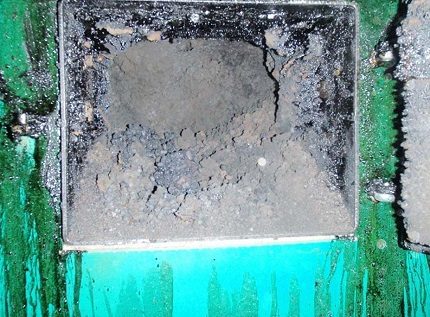
Connection and configuration should be approached with maximum responsibility. Do not rely on factory adjustment. You will have to deal with this at the first start of heating equipment and at the same time you need to take into account the draft of the chimney, the condition of the fuel and the power of the equipment.
Incorrect settings will lead to a variety of problems, including low efficiency, high fuel consumption, frequent breakdowns and much more.
Therefore, manufacturers of many models of pellet boilers recommend that these stages be carried out by employees of specialized organizations with approval for such kind of work.
Common problems and errors
A low efficiency and frequent breakdowns of heating equipment is a clear sign of errors made when tying it.
Error No. 1. Most often, problems arise due to insufficient heating of the thermal carrier. As a result, this leads to the appearance of a large amount of tar or soot.
Error No. 2. Incorrect adjustment or lack of protection against boiling water is one of the most common problems. Because of this, the coolant is excessively heated, which negatively affects heating devices, pipes and other equipment.
Error No. 3. If the heating system is not highly efficient, then it is worth paying attention to the quality of sealing. To do this, check whether the boiler and other structural parts of the system are securely insulated.
Error No. 4. It often happens that the owner of a house allocates a few square meters for a boiler room. As a result, he faces the following problem - it becomes extremely inconvenient and even unsafe to maintain a heating system. Recommendations for the arrangement of the boiler room are given in this article.
Conclusions and useful video on the topic
Video # 1 review of improper organization of the heating system:
Video # 2 analysis of a typical scheme of tying a pellet boiler:
Video # 3 installation of a solid fuel heat generator and boiler:
Pellet boilers have established themselves as efficient and easy-to-maintain equipment. But in order for such a heating system to reveal all its advantages, and its operation to be uninterrupted, it is necessary with all responsibility to approach the choice of fittings, equipment, and to qualitatively implement the strapping scheme.
Share your experience with installation and operation of pellet boilers with readers. Please leave comments on the article, ask your questions and participate in discussions. The feedback form is located below.

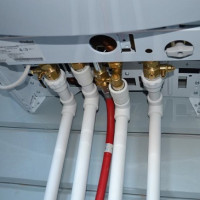 How the boiler is strapped with polypropylene: the rules for the construction of the pp circuit
How the boiler is strapped with polypropylene: the rules for the construction of the pp circuit 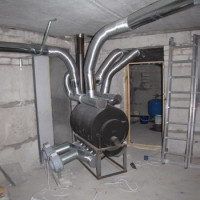 How to arrange air heating of a country house: rules and schemes of construction
How to arrange air heating of a country house: rules and schemes of construction 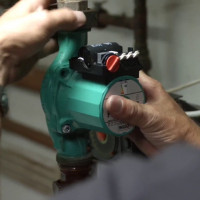 How are heating systems with pump circulation arranged: organization schemes
How are heating systems with pump circulation arranged: organization schemes  Schemes of a steam heating device + example of calculation of a steam system
Schemes of a steam heating device + example of calculation of a steam system 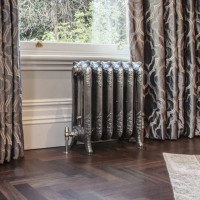 One-pipe heating system Leningradka: schemes and organization principle
One-pipe heating system Leningradka: schemes and organization principle 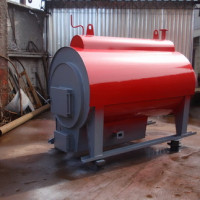 How to make steam heating yourself: device, rules and requirements
How to make steam heating yourself: device, rules and requirements  How much does it cost to connect gas to a private house: the price of organizing gas supply
How much does it cost to connect gas to a private house: the price of organizing gas supply  The best washing machines with dryer: model rating and customer tips
The best washing machines with dryer: model rating and customer tips  What is the color temperature of light and the nuances of choosing the temperature of the lamps to suit your needs
What is the color temperature of light and the nuances of choosing the temperature of the lamps to suit your needs  Replacement of a geyser in an apartment: replacement paperwork + basic norms and requirements
Replacement of a geyser in an apartment: replacement paperwork + basic norms and requirements